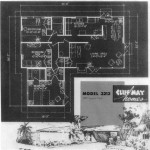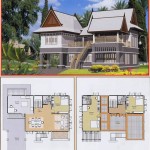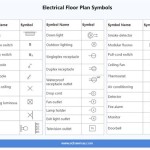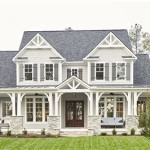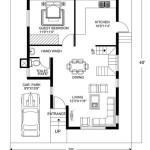Discovering the Charm of 1930s Sears House Plans
The 1930s marked a significant period in American architectural history, influenced by the Great Depression and a shift towards more practical and affordable housing. Sears Roebuck & Co., a prominent retailer of the time, played a unique role by offering pre-cut home kits through their mail-order catalogs. These "Modern Homes" as Sears called them, provided aspiring homeowners with an accessible path to homeownership during a challenging economic era. Examining 1930s Sears house plans provides a fascinating glimpse into the architectural trends, social context, and innovative building practices of the decade.
Key Features of 1930s Sears House Plans
Several defining features characterized Sears house plans of the 1930s, reflecting the prevailing architectural styles and the practical needs of the time. These homes often incorporated elements of popular styles such as Colonial Revival, Cape Cod, and Craftsman bungalows.
Here are some notable characteristics:
* Emphasis on practicality and affordability * Compact layouts optimized for efficient use of space * Simple, unadorned exteriors * Common use of readily available, cost-effective materials * Incorporation of built-in features like cabinets and bookshelves * Focus on natural light with strategically placed windows * Options for expansion or customization to suit individual family needs.Popular Architectural Styles in 1930s Sears Homes
Sears offered a diverse range of house styles to cater to varying tastes and budgets. Some of the most popular styles found in their 1930s catalogs include:
Cape Cod: Characterized by symmetrical facades, steep rooflines, and dormers, Cape Cod style homes offered a cozy and traditional aesthetic.
Colonial Revival: Inspired by classic American architecture, these homes featured symmetrical designs, multi-pane windows, and often included decorative elements like pilasters or dentil molding.
Craftsman Bungalows: Embracing the Arts and Crafts movement, bungalows emphasized natural materials, low-pitched roofs, and spacious front porches, creating a welcoming and informal atmosphere.
Dutch Colonial: Distinctive gambrel roofs provided additional living space in the attic area of these charming homes.
The Impact of the Great Depression on Sears House Plans
The economic hardships of the Great Depression significantly influenced the design and marketing of Sears homes. Affordability became paramount, leading to smaller, more streamlined house plans. Sears emphasized the cost-effectiveness of their pre-cut kits, highlighting the savings on labor and materials.
The "Honor Bilt" line, introduced in 1933, offered even greater affordability by utilizing simpler construction techniques and standardized materials. This allowed families struggling financially during the Depression to still achieve the dream of homeownership.
Identifying a Sears Home
Determining whether a house is a genuine Sears home requires careful investigation. While no single definitive method exists, several clues can suggest a Sears origin.
Key Indicators of a Sears Home
Several key indicators can help identify a potential Sears home. These clues, while not always conclusive on their own, can provide strong evidence when combined.
* Shipping Labels and Stamps: Original shipping labels or stamped lumber can sometimes be found in attics, basements, or under floorboards. * Catalog Matches: Comparing the house to period Sears catalogs can reveal striking similarities in design and layout. * Unique Lumber Dimensions: Sears used specific lumber dimensions that differed from standard sizes, making this a valuable clue. * Hardware and Fixtures: Sears-branded hardware, plumbing fixtures, and built-in features can offer further confirmation. * Mortgage Records: Checking historical mortgage records may reveal a loan from Sears' financing arm.The Legacy of 1930s Sears Homes
Sears Modern Homes represent a unique chapter in American housing history. These homes provided affordable housing solutions during a time of great need, and their enduring presence in neighborhoods across the country serves as a testament to their quality and lasting appeal. Studying 1930s Sears house plans offers valuable insight into the social, economic, and architectural landscape of the era.
The Sears Catalog: A Window into the Past
Sears catalogs served not only as retail brochures but also as valuable historical documents. They provide a rich visual record of the housing styles, interior décor trends, and lifestyle aspirations of the 1930s. The detailed floor plans, descriptions, and pricing information offer a fascinating glimpse into the past, allowing us to understand the housing options available to families during that period.
The Modern Homes Program: An Innovative Approach to Homebuilding
Sears' Modern Homes program represented an innovative approach to homebuilding, utilizing pre-cut lumber and standardized components. This efficient method reduced construction time and costs, making homeownership more accessible to a wider range of individuals. The program's impact on the housing market of the 1930s is significant, and its influence can still be seen in contemporary prefabricated housing practices.

Sears Modern Homes 1930 Pg56 Bedford Vintage House Plans Bungalow Mid Century

Sears Riverside English Cottage Style 1930s Kit Homes Small House Plan Vintage Plans

1936 Winona Kit Home Sears Roebuck 20th Century American Residential Architecture Small Bu Vintage House Plans Bungalow Craftsman

Sears Kit Homes 1936 Mayfield Small Eclectic Cottage

Homes Of Today Sears Kit Houses 1932 Craftsman Bungalow House Plans

Sears Modern Homes 1930 Roebuck Co Free Borrow And Streaming Internet Archive

Guest Designer Gerard Van Kerckhoven Make Your Own Sears House A Cottage In The Forest

1936 Sears Mitc Kit House English Cottage Style 20th Century American Residential Architecture

Homes Of Today Sears Kit Houses 1932 House Plans Metal

Charming 1936 Sears Kit House In Dayton

